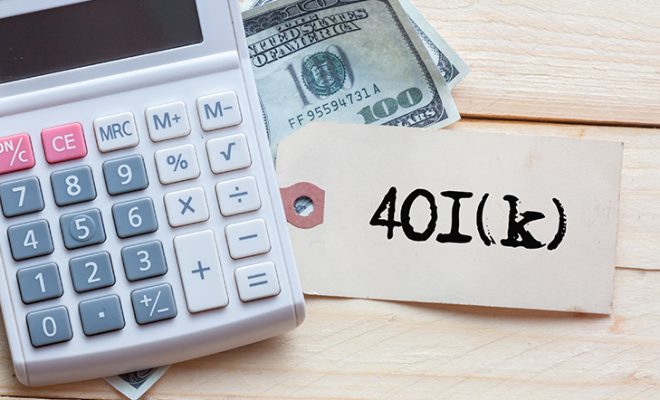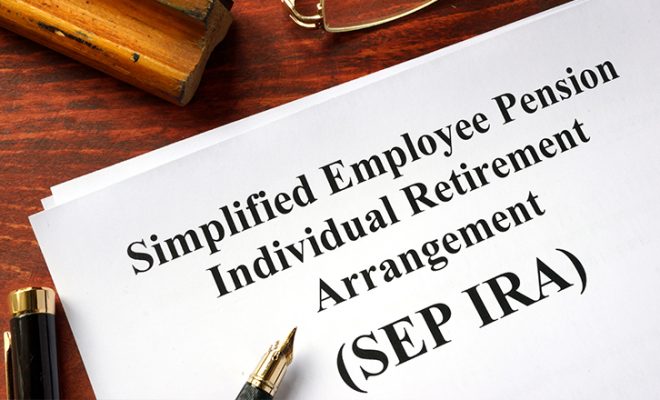How Taxes Apply to Different Types of Retirement Savings Plans

When you retire and start withdrawing money from your savings, you will likely pay taxes to the government. Understanding how different retirement accounts and taxes are intertwined can help you plan your withdrawals wisely. With the right approach, you can minimize your tax burden and keep more of your hard-earned savings to enjoy during retirement.
A financial advisor can help you understand the tax implications of your retirement savings plans. This article will also explore the different types of retirement savings accounts and how they are taxed.
Retirement account taxation – Here’s what you should know about how different retirement savings plans are taxed
1. 401(k)s
The 401(k) is one of the most popular tax-efficient retirement accounts. It is offered by most employers and is a tax-efficient way to save for your future while still working. Here’s how it works – you, your employer, or both can contribute money to the account during your working years. Once you reach age 59½, you can withdraw the funds without any penalty. There are two types of 401(k) accounts – Traditional and Roth. The main difference lies in how their contributions and distributions are taxed. A Traditional 401(k) lets you make contributions before taxes are taken out of your paycheck. This reduces your taxable income now, which can be a big help if you are trying to save on taxes during your working years. However, your future retirement distributions will be taxed as ordinary income. A Roth 401(k), on the other hand, flips this system. You contribute after-tax dollars, so you have already paid taxes on the money going into the 401(k) account. The big benefit is that they are entirely tax-free when you retire and start making withdrawals. There are no taxes on your investment growth or your withdrawals as long as you meet the requirements.
Required Minimum Distributions (RMDs) are another important factor to consider when investing in a 401(k). Traditional 401(k)s have RMDs that require you to start taking money out once you turn a certain age (73 as 2024). This ensures the government eventually collects the taxes owed on your pre-tax contributions and earnings. If you fail to withdraw your money on time, you will owe a penalty. With a Roth 401(k), there are no RMDs in retirement since you have already paid taxes. So, the government does not care when or if you withdraw the money. It is important to note that there are no capital gains on retirement accounts like the 401(k) (both Traditional and Roth). As a tax-advantaged account, the 401(k) allows your investments to grow without triggering capital gains taxes. Instead, you only pay income tax.
The choice between the two accounts is a case of paying taxes later or now. The better option depends on your current and future tax situation. If you think you are in a higher tax bracket in your working years than you will be in retirement, a Traditional 401(k) might be the smarter choice. You can save money during your working years, use the savings towards other financial goals, and enjoy higher liquidity. But if you think you will be in a higher tax bracket in retirement, a Roth 401(k) could save you money in the long run, thanks to the tax-free withdrawals. You can consult a financial advisor to arrive at a decision that suits your needs best.
2. Individual Retirement Accounts (IRAs)
The IRA is another tax-advantaged retirement savings plan. It offers tax benefits similar to a 401(k) but with a few key differences. Unlike a 401(k), an IRA is not employer-sponsored. Instead, you can open it yourself through a bank, broker, or insurance company. This gives you more control over where and how your money is invested. However, unlike 401(k)s, there are no employer-matching contributions with IRAs. The contribution limits for IRAs are also lower than those for 401(k)s. Even with these differences, an IRA can be a great option if your workplace does not offer a retirement plan or if you want to diversify your retirement savings by having both a 401(k) and an IRA.
IRAs come in two main types – Traditional and Roth, and their tax benefits work differently. With a Traditional IRA, the contributions are tax-deductible, which allows you to reduce your taxable income in your working years when you contribute money. Your investments then grow tax-deferred, and you pay tax directly when you withdraw the money. When you retire and start taking distributions, you pay ordinary income. Similar to the 401(k), there are no capital gains on retirement accounts like the IRA (both Traditional and Roth). Traditional IRAs also have RMDs, just like a 401(k), which start at age 73.
In the case of a Roth IRA, your contributions are made with after-tax income, so they do not reduce your taxable income in the year you contribute to the account. However, all qualified withdrawals are completely tax-free, including your earnings. To make a qualified withdrawal from a Roth IRA, you must meet two conditions – you need to be at least 59½ years old, and your account must have been open for at least five years. Unlike Traditional IRAs, Roth IRAs do not have RMDs during your lifetime. So, you can let your money grow as long as you want or leave it entirely to be inherited by your heirs.
However, it is important to note that Roth IRAs have income phase-out ranges that determine eligibility for contributions. In 2025, the phase-out ranges are as follows:
- Married couples filing jointly: When a spouse contributing to a Roth IRA is enrolled in a workplace retirement plan, the phase-out range applies between $126,000 and $146,000.
- Single taxpayers covered by a workplace retirement plan: The phase-out range increases to $79,000 and $89,000.
- Married individuals filing separately: If covered by a workplace retirement plan, the phase-out range remains $0 to $10,000 and is not adjusted for cost-of-living increases.
3. 401(k) vs IRA
Both 401(k)s and IRAs can be excellent retirement savings options. The Roth variations of these accounts can be great tax-free investments for retirees, as they eliminate all tax liabilities on withdrawals. On the other hand, Traditional options are beneficial if you are looking to defer taxes until retirement. Depending on your financial goals and tax situation, you can use one or both accounts. Additionally, you might consider rolling over funds from a Traditional IRA or 401(k) into a Roth IRA to take advantage of future tax-free growth. However, keep in mind that you will need to pay taxes in the year of the conversion. You can consult a financial advisor for personalized guidance to ensure the best strategy for your situation.
SPONSORED WISERADVISOR
4. 403(b)
A 403(b) plan is specifically designed for employees of public schools, certain non-profit organizations, and tax-exempt institutions. It shares many features with a 401(k) but can only be used by professionals in education, healthcare, and religious organizations. Some examples of qualified participants include librarians, schoolteachers, professors, clergy members and ministers, healthcare workers, and employees of organizations under the 501(c)(3) tax-exempt status. In addition to employees of public schools and state colleges, participants in 403(b) plans may include public school workers employed by Indian tribal governments.
Both employees and employers can contribute to a 403(b) account. These contributions grow tax-deferred until the funds are withdrawn. Withdrawals are typically allowed penalty-free starting at age 59½, and taking out funds earlier may incur an additional tax penalty. There are two types of 403(b) plans—Traditional and Roth. Contributions to a Traditional 403(b) are made on a pre-tax basis and taxes are deferred until funds are withdrawn in retirement. In contrast, a Roth 403(b) allows you to contribute after-tax income, so your withdrawals in retirement, including any earnings, are tax-free.
5. Simplified Employee Pension (SEP) IRA
A SEP IRA is tailored for small businesses and self-employed individuals. It allows small business owners to provide retirement benefits to themselves and their employees. For tax purposes, SEP IRAs function similarly to Traditional IRAs. Employers can make contributions directly to employees’ SEP IRA accounts, and these contributions are tax-deductible for the employer. The contributions and earnings within the account grow tax-deferred until they are withdrawn. Distributions are taxed at ordinary income tax rates, and early withdrawals before the age of 59½ may incur an additional 10% penalty.
SEP IRAs offer better flexibility than some other retirement accounts. While the account only allows the employer to make contributions, the contribution limits are significantly higher than those of Traditional or Roth IRAs. This can potentially result in better retirement savings. Additionally, SEP IRA funds can be rolled over to other retirement accounts, such as a Traditional IRA, without triggering taxes.
6. Social Security benefits
As much as 85% of your Social Security benefits could be subject to taxation. The maximum taxable earnings limit for Social Security will rise to $176,100 in 2025. However, the exact tax rate depends on your income. Social Security benefits are subject to federal income tax, depending on your combined income and filing status.
- For individual filers with a combined income between $25,000 and $34,000, up to 50% of their Social Security benefits can be subject to taxes. If their combined income exceeds $34,000, as much as 85% of their benefits could be taxed.
- For married couples filing jointly, a combined income between $32,000 and $44,000 could result in up to 50% of benefits taxed, and income above $44,000 could result in 85% of benefits being taxed.
- Married individuals filing separately are likely to pay taxes on their benefits regardless of their income level.
It is worth noting that about 40% of people drawing Social Security checks pay federal income taxes on their benefits.
At the state level, nine states currently tax Social Security benefits:
However, the rules vary widely. If you live in one of these states, it is essential to understand how their tax policies could impact your Social Security income in retirement.
Additionally, both employees and employers contribute 6.2% each of the employee’s income toward Social Security. Self-employed individuals, on the other hand, have to pay the entire tax themselves, resulting in a tax of 12.4%.
7. Pension accounts
Pension income is generally considered taxable, and the tax treatment depends on how you receive your payments. If you receive regular annuity or periodic pension payments, taxes will be levied as you draw income. In this case, you will pay income tax at your standard rate. On the other hand, if you opt for a lump-sum payout, the entire amount will be taxed in the year you receive it, and you will need to account for this when filing your annual return. You can consider making a direct transfer of a lump sum from a pension account to an IRA to delay taxes until you withdraw the funds. This option is useful if you wish to spread out withdrawals and manage your taxable savings more effectively. If you move your funds to a Traditional IRA, you will not pay any taxes on the transfer. The tax will only be levied on the withdrawals. However, if you roll into a Roth IRA, you will pay tax on the transfer, while your withdrawals will be tax-free.
It is also essential to note that state-level taxation of pensions varies across the country. Some states provide retirees with a tax-friendly environment by not taxing pension income at all. States where pensions are not subject to taxation include:
- Florida
- Alaska
- Nevada
- Tennessee
- Texas
- Washington
- South Dakota
- Wyoming
- Alabama
- Hawaii
- Illinois
- Mississippi
- Pennsylvania
- New Hampshire
Choosing to retire in these states can help lower your taxes.
To conclude
Tax planning can help you enhance your retirement income while offering clarity about your tax situation. Understanding how much of your retirement income from various accounts will be taxed avoids the false hope of receiving more than you actually will. This clarity ensures better financial planning. Additionally, it allows you to focus on employing tax-saving strategies that can reduce your tax burden. Since many accounts are taxed during either your working years or retirement, starting tax planning early is crucial, as it may require making important decisions now to secure your financial future.
Use the free advisor match tool to get matched with qualified financial advisors who can help you understand the different types of retirement accounts and their tax implications. Answer some simple questions about your financial needs and get matched with 2 to 3 advisors who can best fulfill your financial requirements.
For further information on creating a suitable retirement plan for your unique financial requirements, visit Dash Investments or email me directly at dash@dashinvestments.com.
About Dash Investments
Dash Investments is privately owned by Jonathan Dash and is an independent investment advisory firm, managing private client accounts for individuals and families across America. As a Registered Investment Advisor (RIA) firm with the SEC, they are fiduciaries who put clients’ interests ahead of everything else.
Dash Investments offers a full range of investment advisory and financial services, which are tailored to each client’s unique needs providing institutional-caliber money management services that are based upon a solid, proven research approach. Additionally, each client receives comprehensive financial planning to ensure they are moving toward their financial goals.
CEO & Chief Investment Officer Jonathan Dash has been covered in major business publications such as Barron’s, The Wall Street Journal, and The New York Times as a leader in the investment industry with a track record of creating value for his firm’s clients.











